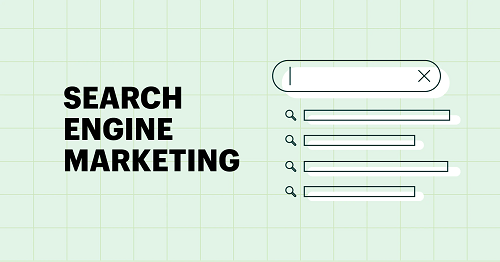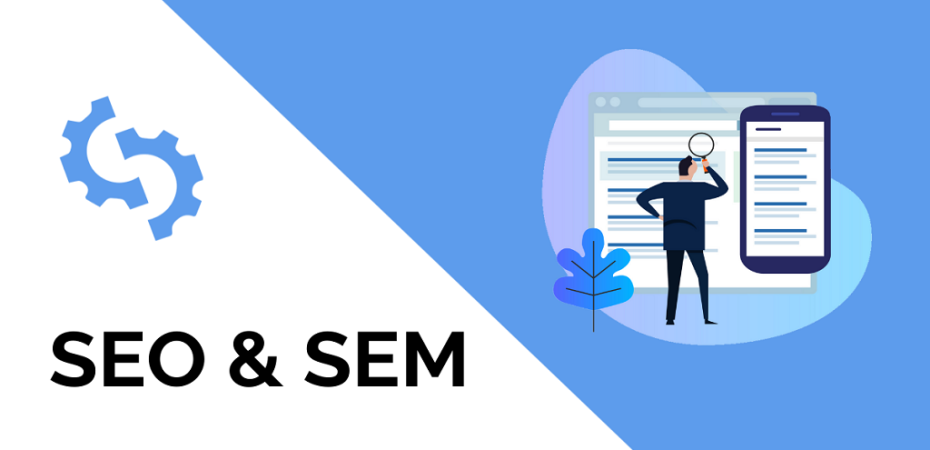In the digital age, where online presence can make or break a business, the concepts of Search Engine Optimization (SEO) and Search Engine Marketing (SEM) have taken center stage. These two strategies are fundamental to enhancing a website’s visibility on search engines and attracting organic and paid traffic. However, they differ significantly in their approaches, goals, and outcomes. In this comprehensive guide, we delve into the intricate details of SEO and SEM, unraveling their distinctions, benefits, and best practices.
Understanding SEO (Search Engine Optimization)

Search Engine Optimization (SEO) is a multifaceted strategy aimed at improving a website’s visibility in organic (unpaid) search engine results. The primary objective of SEO is to rank a website higher on search engine results pages (SERPs) for relevant keywords and phrases. This involves optimizing various on-page and off-page factors to ensure that search engines recognize the website’s relevance and authority within its industry or niche.
Key Components of SEO:
- On-Page Optimization: This involves optimizing elements within the website itself, such as meta tags, headings, content, images, and internal linking. Strategic keyword usage and the creation of high-quality, informative, and engaging content are critical aspects of on-page optimization.
- Off-Page Optimization: Off-page optimization focuses on building a website’s authority and credibility through external factors. This includes acquiring high-quality backlinks from authoritative websites, managing online reputation, and engaging in social media and influencer marketing.
- Technical SEO: This aspect deals with the technical structure of a website, ensuring that it is easily crawlable and indexable by search engines. Factors like site speed, mobile-friendliness, XML sitemaps, and structured data markup fall under technical SEO.
- User Experience: Search engines value websites that provide a positive user experience. Factors like page load times, mobile responsiveness, intuitive navigation, and low bounce rates contribute to a better user experience and indirectly impact SEO.
Benefits of SEO:
- Sustainable Results: Properly executed SEO efforts can lead to long-lasting results. Once a website gains authority and ranks well for relevant keywords, it can continue to attract organic traffic over time.
- Cost-Effective: While SEO requires an investment of time and resources, the long-term benefits often outweigh the initial costs. Organic traffic is essentially free, unlike paid advertising.
- Credibility and Trust: Higher organic rankings are often perceived as a sign of credibility and trustworthiness. Users tend to trust organic search results more than paid ads.
Understanding SEM (Search Engine Marketing)

Search Engine Marketing (SEM) encompasses a broader range of strategies aimed at improving a website’s visibility on search engines through both organic (SEO) and paid means. The primary distinction between SEO and SEM is that SEM includes paid advertising efforts alongside organic optimization.
Key Components of SEM:
- Paid Search Advertising (PPC): Pay-Per-Click (PPC) advertising is a central element of SEM. It involves creating and bidding on ads that appear at the top of search engine results for specific keywords. Advertisers pay a fee each time a user clicks on their ad.
- Display Advertising: Display ads are visual ads that appear on various websites within an ad network. They can include images, videos, and interactive elements. Display advertising is beneficial for brand awareness and targeting specific demographics.
- Remarketing: Remarketing involves targeting users who have previously visited your website or interacted with your brand. These users are shown targeted ads as they browse other websites or social media platforms.
Benefits of SEM:
- Immediate Results: Unlike SEO, which takes time to gain traction, SEM provides instant visibility. Paid ads can appear at the top of search results as soon as the campaign is launched.
- Precise Targeting: SEM allows for highly granular targeting. Advertisers can choose specific keywords, demographics, locations, and even the time of day when their ads will appear.
- Measurable ROI: SEM platforms provide detailed metrics, allowing advertisers to track the performance of their campaigns. This makes it easier to measure the return on investment (ROI) and make data-driven decisions.
SEO vs. SEM: Making the Choice
The decision between focusing on SEO, SEM, or a combination of both depends on various factors, including business goals, budget, timeline, and competition. Here are some scenarios where one strategy might be more suitable than the other:
- SEO Dominance: If your business is focused on long-term growth and you have the resources to invest in consistent content creation, backlink building, and technical improvements, SEO might be the right path. It’s ideal for building a strong online presence and authority within your industry.
- Immediate Visibility: If you’re launching a time-sensitive campaign, product, or event and need immediate visibility, SEM can provide instant results through paid ads. This is particularly useful for promotions and events with a specific timeframe.
- Balanced Approach: Many businesses opt for a balanced approach that combines SEO and SEM. This approach allows you to reap the benefits of long-term organic growth while also gaining immediate visibility through paid advertising.
Best Practices for SEO and SEM
SEO Best Practices:
- Keyword Research: Identify relevant keywords with high search volume and low competition. Use tools like Google Keyword Planner or SEMrush to aid your research.
- High-Quality Content: Create informative, engaging, and valuable content that addresses user needs. Incorporate keywords naturally and avoid keyword stuffing.
- Optimize On-Page Elements: Craft compelling meta titles, descriptions, and headings that accurately reflect your content. Use descriptive alt tags for images.
- Earn Quality Backlinks: Focus on building high-quality, authoritative backlinks from reputable websites within your industry.
- Regular Technical Audits: Conduct regular technical audits to ensure your website is well-optimized for search engines. Address issues like broken links, site speed, and mobile-friendliness.
SEM Best Practices:
- Clear Campaign Goals: Define clear and specific goals for your SEM campaigns. Whether it’s lead generation, sales, or brand awareness, having clear objectives will guide your strategy.
- Targeting and Keywords: Choose relevant keywords for your paid campaigns. Use match types (broad, phrase, exact) to control the scope of your ads.
- Compelling Ad Copy: Create engaging ad copy that highlights your unique value proposition. Include a call to action to encourage users to click.
- Landing Page Optimization: Ensure that the landing page users are directed to is relevant to the ad’s content. Optimize it for conversions by providing clear information and a strong call to action.
- A/B Testing: Continuously test different ad variations, keywords, and targeting options to identify what works best for your audience.
Conclusion
In the realm of digital marketing, SEO and SEM stand as powerful tools for enhancing a website’s visibility on search engines. While SEO focuses on organic optimization and sustainable growth, SEM encompasses both organic and paid strategies to achieve immediate results. The choice between the two depends on business goals, budget, and timeline. By implementing best practices for SEO and SEM, businesses can navigate the complex world of search engine visibility and carve out a competitive edge in the online landscape.
Read Also

